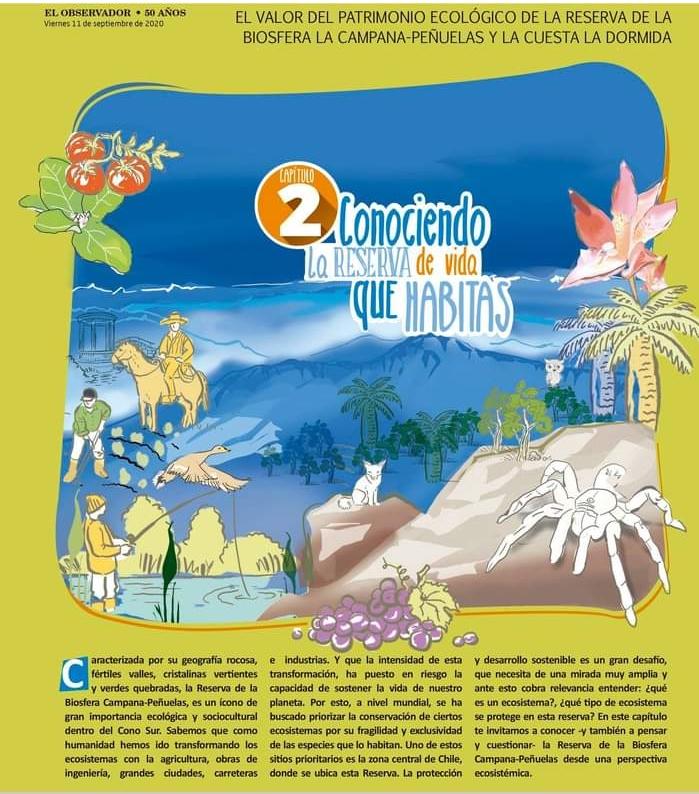<em>Never before have scientists, academics, journalists, botanists, photographers, designers, and local people come together to share the secrets and wonders of the largest green lung in central Chile through educational materials that will be distributed to the communities of Limache, Olmué, Villa Alemana, and Til Til.</em>
The series of 20 booklets about the La Campana-Peñuelas Biosphere Reserve and the area of Cuesta La Dormida, which will be published by the newspaper “El Observador” in the Valparaiso region, in collaboration with the electrical transmission company ISA Interchile, will become a valuable contribution to environmental education in educational establishments and a unique work for specialists and the general public.
A book will be edited from this work and distributed to schools in Limache, Olmué, Villa Alemana, and Til Til, becoming an important tool for the defense and knowledge of the environment.
The series consists of 20 biweekly tabloid publications, each with 8 pages printed in full color, which will be circulated throughout the Friday edition of “El Observador” newspaper from August 2020 to May 2021.
The objective is to value the ecological heritage of an area that is open to the public, with the capacity to receive and attend to visitors, with camping areas, and hiking trails. With installations of the National Forest Corporation (CONAF) and with a wide range of scientists researching its species and with various access sectors.
The La Campana National Park is located in the communes of Hijuelas and Olmué, where there are entrances to the heritage zone. Limache, Villa Alemana, and Til Til have access to the entire La Campana-Peñuelas Biosphere Reserve and the area of Cuesta La Dormida.
This natural wealth is presented through documentary and academic sources, as well as through testimonies from local people in the mentioned communes, academics, reserve neighbors, families belonging to the first inhabitants of the territory, and local professionals who have worked on projects associated with the reserve. The goal is for the community to participate in generating the content of the booklets and the book.
Each of the topics will include an expert’s opinion, an infographic illustrating the content, interviews, reviews, specialized vocabulary, descriptions of landscapes, flora and fauna, explanations of concepts, and a didactic space that will allow young people to enter the topic pedagogically.
The final objective of the publications, both the book and the booklets, is to provide the regional and national community with an unprecedented educational document about Cuesta La Dormida and the La Campana-Peñuelas Biosphere Reserve, making the booklets a working material in educational establishments in the area and formative reading for the general public.


